See also:
My Packrafting book
Packrafting Gear Essentials
Packraft air pressure
Sigma TXL+: my current packraft
It’s taken a while, but as prices drop and brands multiply, more outdoorsy folk are discovering packrafting – a great way of getting on the water in a light, portable, stable and easy-to-paddle mini-raft.
A 3-kilo packraft may resemble a cheap PVC beach toy, but it’s the durable, stretch-free, TPU fabric and solid, hand-made construction that sets them far apart. This enables higher pressures which adds up to a stiffer hull: the key to enjoying inflatable paddling.
It’s a whole new way of exploring and enjoying a watery wilderness. Read a series of articles here on the origins of packrafting; it’s older than you think. In the UK the lochs and rivers of the Scottish Highlands are especially well suited to overnight treks with packrafts, and southern France is full of wonderful rivers. [More below].
The clue’s in the name: you can pack up your raft in minutes, hike with it for hours or days, redeploying at the water’s edge and paddling onwards. You don’t need any special skills to paddle one on calm water, but as with all paddle craft, wear buoyancy aids and consider currents, rapids, weirs, tides, irate swordfish and especially winds to which light, high-sided packrafts are especially prone. Note also that unlike an IK, most packrafts have only one air chamber and when it goes (very rare) it’s gone.

For years Alpacka Rafts‘ comprehensive and innovative range (above) led the way. My first three packrafts were all Alpackas, but now there are well over twenty alternative brands on the market, including Decathlon’s Itiwit brand. Most are produced by a couple of Chinese factories who customise to order before they get sold elsewhere under various brands. Some of these smaller brands appear to be a side hustle by ‘hobby entrepreneurs’ who don’t know much about packrafting and simply buy in base models from their Chinese suppliers. A few declare this openly, most don’t. Does it matter? Not really as long as they send you what you paid for and you’re happy with it. A packraft is relatively easy to make and some of the best made boats I’ve seen are made in China.
A few heavier PVC models, are mostly made in Eastern Europe where there’s a long history of ‘robust’ PVC boat manufacture. US brand, Kokopelli now make PVC packrafts alongside TPU, some weighing nearly 9kg/20lbs which is as much as a small IK. They paddle just the same and may well pump up stiffer, but are less pliant and more bulky when rolled up.
It’s so easy to make a packraft a couple of places – Canada and the UK – sell MYO packraft kits to assemble your own from sheets or pre-cut pieces of TPU. It will be 20-30 hours of fiddly assembly but costs less than half the price of the cheapest packraft you’ll buy off the shelf. Above all, you need a good quality heat-sealing iron, plus the space and the skill to do a good job. That’s me out, then!


At the other extreme are ultralight packrafts like the Supai or Anfibio Nano, made of thin 75D or 210 coated nylon or polyester, like your cag, tent or rucksack. This makes for very light and compact boats, but on the water they can be less firm and responsive and are not so enjoyable to paddle. See ‘Crossrafts’, below.
Overall, I’ve found that there’s a good reason why TPU remains the most widely used fabric for packrafts: the texture varies from boat to boat but it’s soft and supple; pumps up firmly on the water, is durable and more resistant to UV than PVC, plus is dead easy to repair and compact to roll up.
Even if things have moved on a whole lot since, back in 2015 we tested four packrafts from MRS, Aire, Nortik and Supai alongside my Alpacka Yak (click this for the summary). And don’t forget that at any waterside holiday resort you can buy cheap PVC beach toys costing from 10% of the cheapest packraft and which are OK while they last (can be hours or days). I call these Slackrafts and they get their own page on IK&P. Slackrafts were a great way of investigating the packrafting experience, but now that proper packraft prices have dropped and brands mushroomed, you might prefer to skip on the PVC landfill and go straight to the real thing.
Read about the Anfibio Alpha XC, Nano RTC and Rebel 2K, the ROBfin and Longshore International’s EX280 double, as well as my own Alpackas and MRS Nomad.
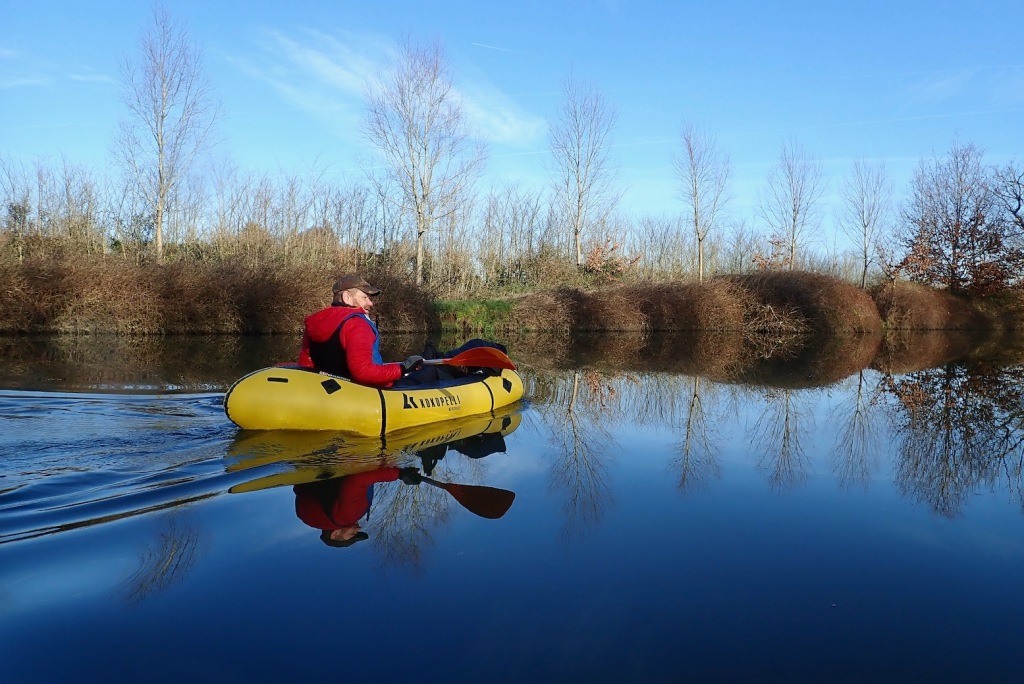
As for speed, on flatwater packrafts are slow compared to a kayak, though one time I took a 12-km run along the slow-moving Medway in Kent and averaged 3.4mph or 5.5kph. More recently in France I averaged over 7kph, but an overnight storm made the current swift that day. I’ve reached similar speeds sailing in strong winds on Scottish lochs, but on flatwater or slow rivers a packraft is not an especially engaging thing to paddle. For that you want a kayak. Think more more about where a packraft can get you: places that heavier and bulkier IKs, far less hardshells, cannot reach.

Although they’re durable, packrafts are still very light and expensive inflatable boats at risk to damage from sharp objects. Such damage usually occurs during transportation rather than on the water. Though it’s never happened to me, field repairs are part of ownership – more so than quality IKs – but can be done in a couple of minutes with tape, or over a few hours with Stormsure or Aquaseal sealant.
Me and my packrafts
In 2010 I bought a first-generation Alpacka Denali Llama (below left) with what became known as a zip-off ‘Cruiser’ deck. I’d never seen anything like it and back then, expensive American-made Alpackas were the only game in town. I sold that to Alastair Humphreys (it’s featured here and probably in his MicroAdventures book) and in 2011 I got an all-yellow Yak with the innovative and now much copied extended pointy stern.

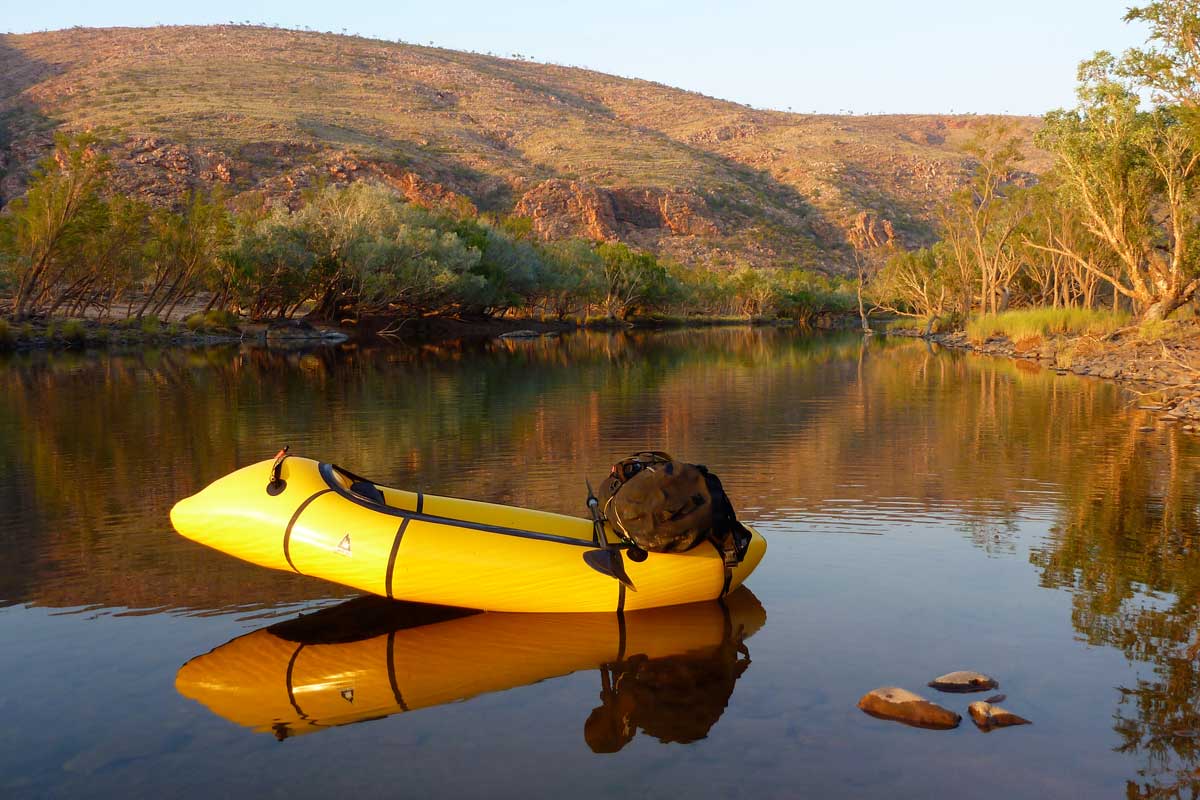
I did loads with that boat: Utah, northwest Scotland, France and the remote Fitzroy river in northern Australia. I’ve also tried surfing, disc sailing, bikerafting, and urban packrafting. In 2014 I downscaled to a simpler, lighter blue-and-yellow Yak which I used on the Lycean Way in Turkey (below left), as well as a couple more visits to southern France.


In 2019 I sold that and bought a bigger, MRS Nomad S1 ‘pakayak’ which I paddled in New Zealand as well as my usual places and London’s Regents Canal. The Nomad went, and in 2021 I got myself an Anfibio Rebel 2K which I’ve so far used on the Wye and in Scotland’s Knoydart alongside a mate in his Nomad S1. For 2022 I got an Anfibio Sigma TXL and about 18 months later I switched it for a blue TXL+.

Pack 5 (2021) Wales


Packrafting adventures
With a big backpack you can carry the boat, camping gear and several days of food on your back. At the water’s edge you inflate, secure your pack over the bow (or inside the hull) and paddle off along rivers or across lakes. At the other end deflate, roll it up and carry on trekking. It’s not my thing, but a packraft also makes an agile white water boat (below) which, with a deck or self bailing, will manage rapids as gnarly as you’d dare.
Just like IKs, packrafts bounce off rocks and are much more stable than regular hardshell kayaks. They can even be eskimo rolled with suitable thigh straps. In all the time I’ve used them I’ve never had a puncture, not would expect one with careful use.
Unlike a full-sized raft, there’s no need for a bulky pump; you can inflate by scrunching a featherlight airbag attached to the valve on the boat, as above left. Then you top off by mouth: the firmer the boat the better it rides.
For those who don’t have lungs like Tarzan, after airbagging you can use a compact mini handpump (below left) to top up and get the boat good and firm. Lately, I’ve also been using a USB rechargable minipump (below right). It’s actually no faster than a well-deployed airbag and the boat still needs topping up with a mini handpump, but you can do other stuff while it fills.


Inflation Valves
Originally, a simple cap screwed into a threaded port in the hull, like a bottle top. With the easily lost cap removed, you attached an airbag and inflated, then undid the airbag and quickly tried to screw the cap back on before too much air was lost. Then you topped up by mouth, using the separate twist-and-lock elbow valve.


Then in the US, NRS were among the first to adopt clever and simple one-way Boston valves (above right) on packraft. Otherwise crumby Slackrafts had used these for years which made people assume they must be rubbish, but today most packrafts feature Boston valves which are well suited to low-pressure inflatables like packrafts. The one-way rubber mushroom valve in the valve body means a separate elbow top-off valve can be ditched, making one less thing to break, leak or assemble. And because the entire valve body can be unscrewed (while still remaining attached to the boat), the packraft can be quickly and fully deflated.
Bending over backwards to be different, after an early misstep Alpacka developed their own switchable valve which takes more effort to inflate and fully deflate, and looks like it won’t work with a push-on electric pump. Similarly, Kokopelli (also from the US) choose to use Leafield D7 ‘raft valves’ on their packrafts which need a separate oral inflation tube (or a K-Pump) to top the boat off.
Firm boats paddle better but like IKs, a packraft that’s been fully inflated with ambient air will go soft once cooled in the water, so will need more topping up. ‘Tempering’, they call it. Put the boat in the water, splash water over it (left); it will go a bit soft because the air inside has cooled down and contracted. Top up some more. The red handpump up above left has a long hose which means you can top up a push-fit Boston valved boat on the water, if needed.
A good packraft should hold air for days at a time, but it’s better not to leave it fully inflated in the hot sun. Just as an inflatable put in cold water goes soft, left in the hot sun air inside heats up and expands, pressures rise and the seams get strained, though a packraft is unlikely to rip apart, as an IK can do.
Decks
Not being into technical whitewater, I’ve always preferred open IKs & Ps, wearing a drysuit if getting cold and wet might be an issue. But knowing little about packrafts, I ordered my first Alpacka in 2010 with what they later designated the Cruiser spray deck (below left). It could be rolled up out of the way, or even zipped and velcro’d right off. It included a little inflatable ‘codpiece’ to help shed water, as well as the all-important ‘ripcord’ on the left to quickly pull the deck back should you need to bail out in a hurry. (Note the blue grab handle I added to mine to make this easier; I never needed to use it).
It was nice to have the option but my Alpacka Cruiser deck (no longer offered) looked a bit flimsy and I rarely used it. As it was, I never paddled in conditions that really required it, plus I’ve never liked the hemmed-in feeling of any paddle-boat deck.
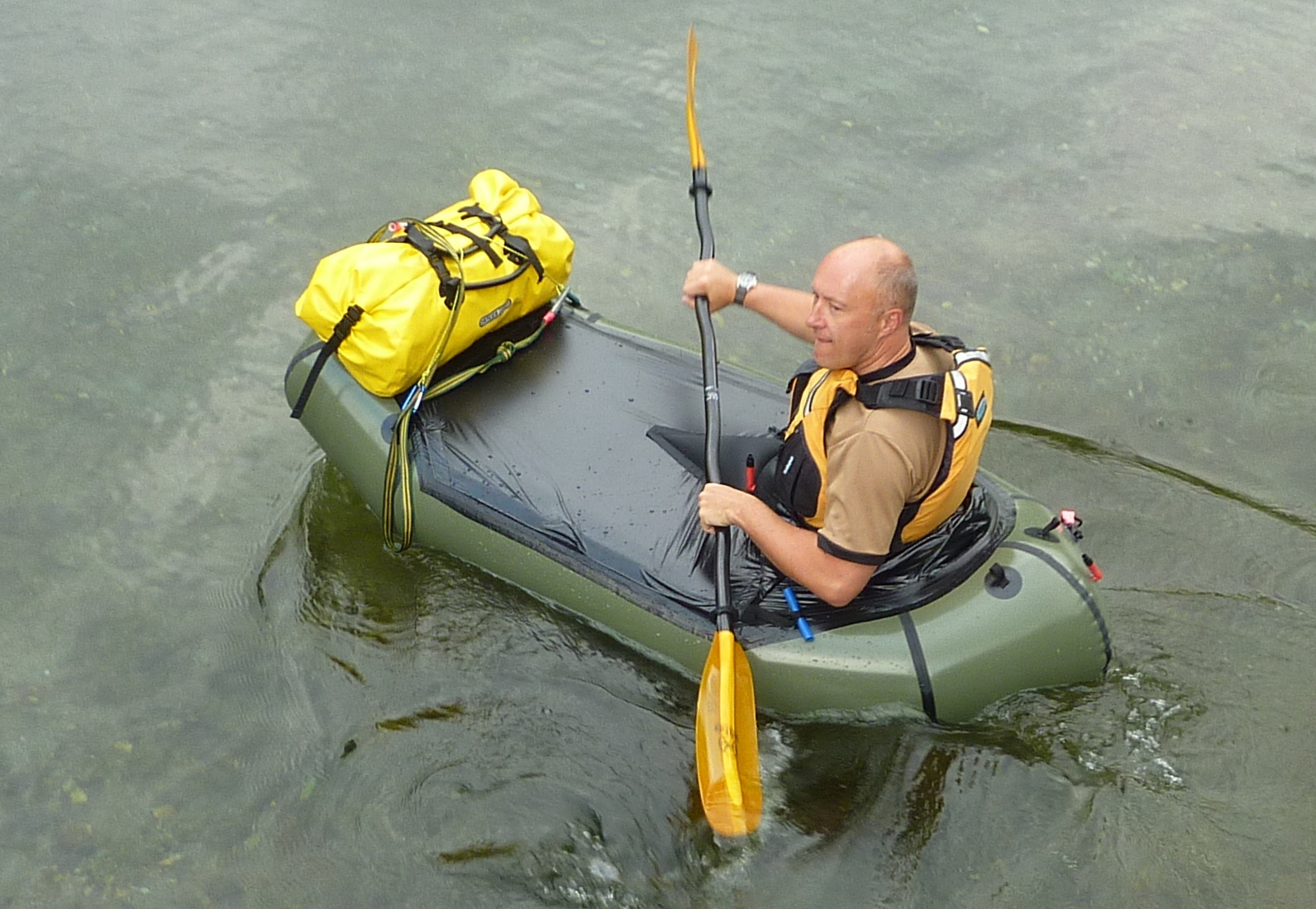

Cruiser decks are now widely copied by other packraft brands, but they were never intended to be fully effective in technical white water (Grade 3 and above). They’re just a handy way of keeping you warm and largely dry in splashy conditions which is all that the majority of paddlers ask for.
Anfibio now have what you might call a permanently fitted ‘Cruiser’ deck on the Rebel 2K which uses a curved zip and rolls up to either side. Unless it’s very warm, I found I used the deck most of the time. I must be getting older.
All Cruiser-like decks feature an integrated torso tube or tunnel (above right) with velcro up the side to help keep water out. They work OK, but water will pass through the velcro. For safety’s sake (ie: quick removal), pull this tube over the outside of your buoyancy aid, even if heavy rain might run down inside, the tube tends to sag down and access to you pfd pockets is reduced. A cinch cord at the top helps reduce sagging.


Another Alpacka innovation, also widely copied, was a permanently fitted whitewater deck incorporating a large rimmed hatch (‘coaming’) to take a regular, stretchy neoprene kayak spray skirt. All their decks are like this now. Such boats are well suited to technical white water, surfing and even rolling. As on a hardshell kayak, to bail out you yank back your spray skirt with the grab loop.
On any decked paddle boat, familiarise yourself with the action of quickly removing your skirt or pulling back the deck, BEFORE the day you need to do so in a panic, upside down in the water.
Paddles
For a portable boat you’ll want a compact four-part paddle which ought to weigh under a kilo. I’ve used Aqua Bound’s Manta Ray 220 for over a decade but there are a loads out there now. Anfibio’s Wave is a very good value four-parter with length and blade angle adjustment. Click the link for more.


In-hull storage
Originally, most overnight gear was lashed over the bow, as below. With weight up front the boat actually yawed less and, being one-chamber boats, something like a submersible (non roll-top) Watershed UDB gave emergency back-up buoyancy when all was lost.
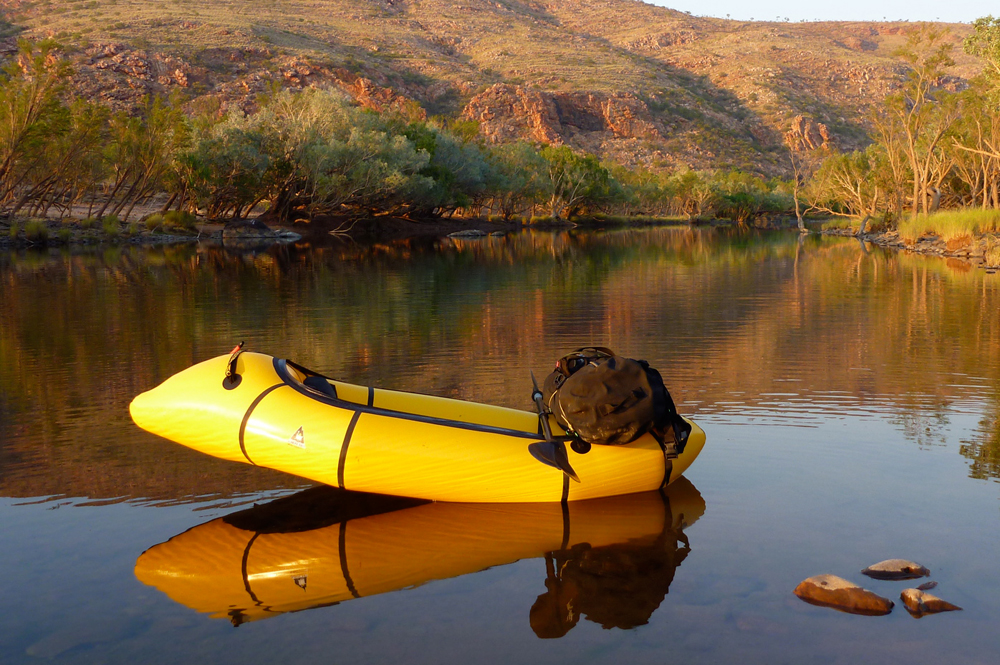
Then Alpacka introduced a waterproof zip in the stern called the Cargo Fly which enabled you to store gear inside the hull tube. For white water it offered better visibility and stability than a backpack over the bow, even if an external bag is easier to demount for longer portages.
The zip obviously needs to be kept very clean and well lubed, and these TiZips have been subject to warranty claims and still can have leakage issues from the side fabric, not the actual zipper mechanism, as a fabric-eating fungus takes hold. They can’t be any worse than TiZips in dry suits, but those are under no pressure and aren’t critical to your boats buoyancy. Since then, the zips must have have become more reliable as many other packraft brands now use the idea, but not all warranty it. It may be worth pre-emptively coating the zip with anti-fungal spray.
Another cunning method of in-hull storage are big compartments fitted into the side tubes, as on Anfibio’s Rebel 2K or Sigma TXL (Nortik have a similar idea). Like the pockets in your jeans, it means there’s no direct zip link into the hull chamber which makes the zip seal on the outside is a little less critical. Besides the portage limitations (actually, not so bad I’ve since found) it’s a bit of a hassle having to re-inflate the boat every day after reloaded your TubeBags, but on the water the benefits are clear, including having no gear visible when away from the boat.
A more radical way of doing it is a roll-top hull closure imitating a dry bag. In 2020 Anfibio Packrafting’s Nano RTC did just that, but there will always be a little leakage. I think TubeBags are a better solution for touring.


Crossrafts
This term seems to have slipped from usage, but defines a sub-category of packrafts: very light boats with no decks and made from nylon or polyester with the non-porous PU coating inside, like your tent or backpack, as opposed to the more durable shiny exterior coating of TPU.
They’re best suited for crossing or navigating calm bodies of water rather than paddling along them, far less tackling whitewater, though this doesn’t stop people trying.
The low prices and light fabric enables incredible weights of a kilo or less, creating a much needed link between slackrafts and packrafts. Because of the thin fabric, you lose out on durability, as well as the performance and response of stiffer TPU hulls like an Alpha XC which still weighs less than 2kg.


As the name suggests, the 670g Supai Flatwater II is an ultra-light crossraft suited to small lochs, canyoneering or following calm rivers. With its narrowed and tapered bow, it resembles the much admired Sevylor Trail Boat – the Lost Prince of Slackrafts. We tried one and a couple of years later tried the fatter Matkat version.
More recently, Anfibio’s Nano RTC has a roll-up closure which enables stuff to be stored inside and weighs barely over a kilo.
Bikerafting
With a packraft you can strap a bicycle over the bow and bikeraft. All because a packraft is exceedingly light but very buoyant and stable and, being made of durable fabric, won’t burst on encountering a sharp noise.

Tandem packrafts
They make those too; a great way of getting two on the water in a lightweight boat, and also a great way of having a fast solo boat with loads of room. Don’t ask me to explain, but the longer a boat’s waterline the faster it is through the water.
Two up, just make sure the front paddler has a proper backrest. and note that you won’t be any faster due to hull-speed limitations, but the effort will be shared so it’s less tiring for longer. Read about our test of the Longshore 280EX (no longer made).
Having had half a dozen packrafts, I’ve now settled for a similarly long Anfibio TXL+ which which I mostly sea paddle as a roomy solo ‘packayak‘. As you can read here, it’ll do 6kph on calm seas and is still light enough to walk back.




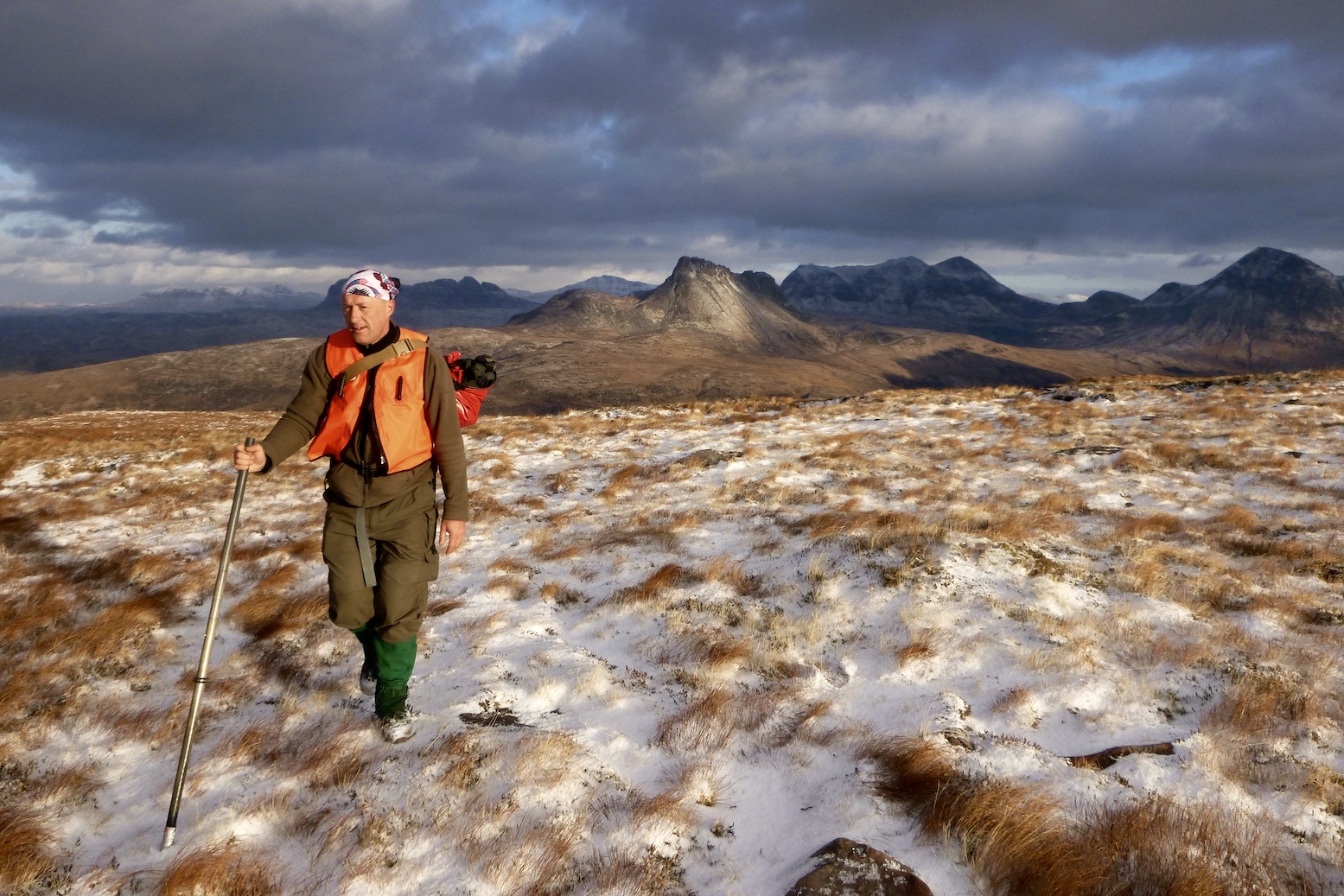




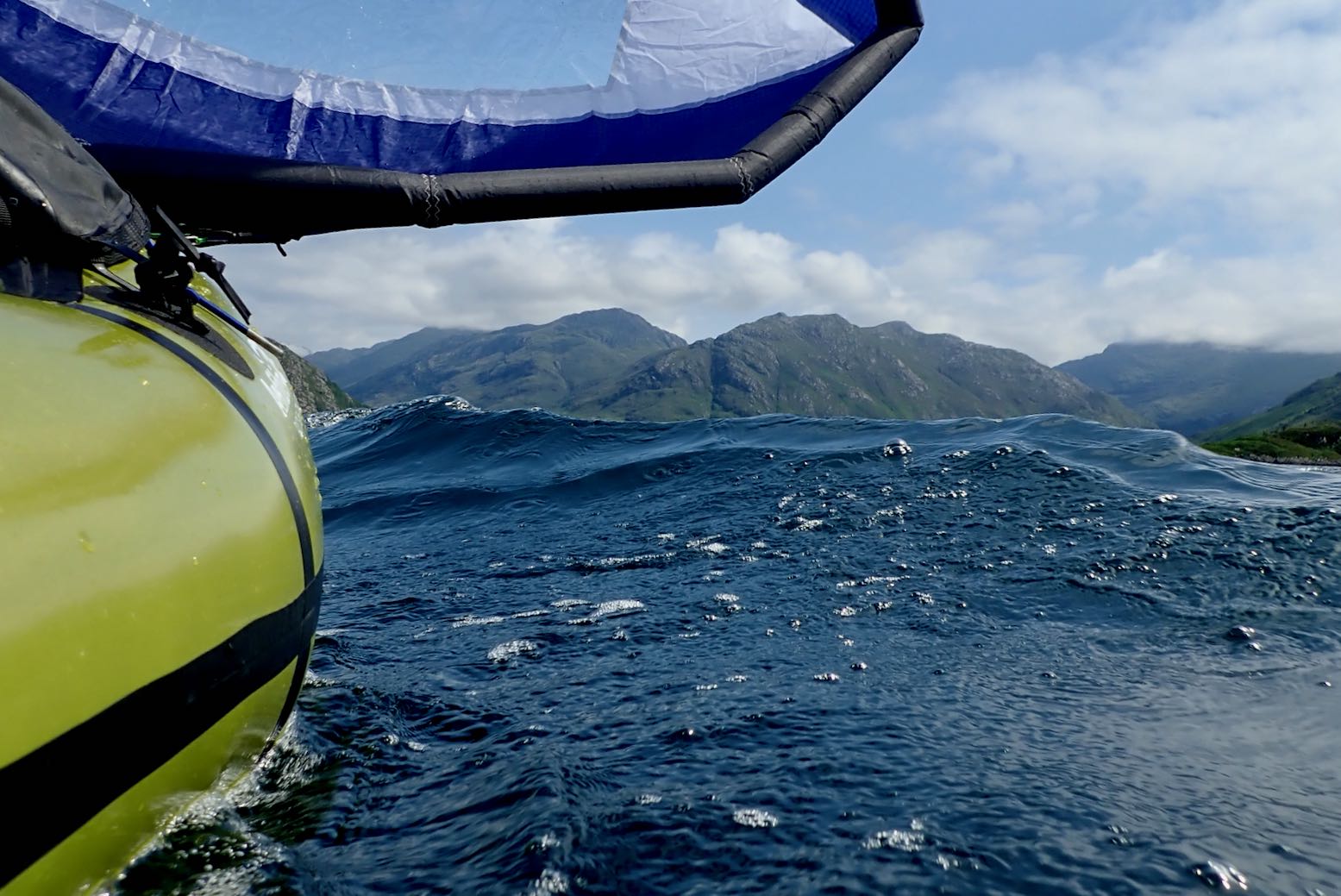


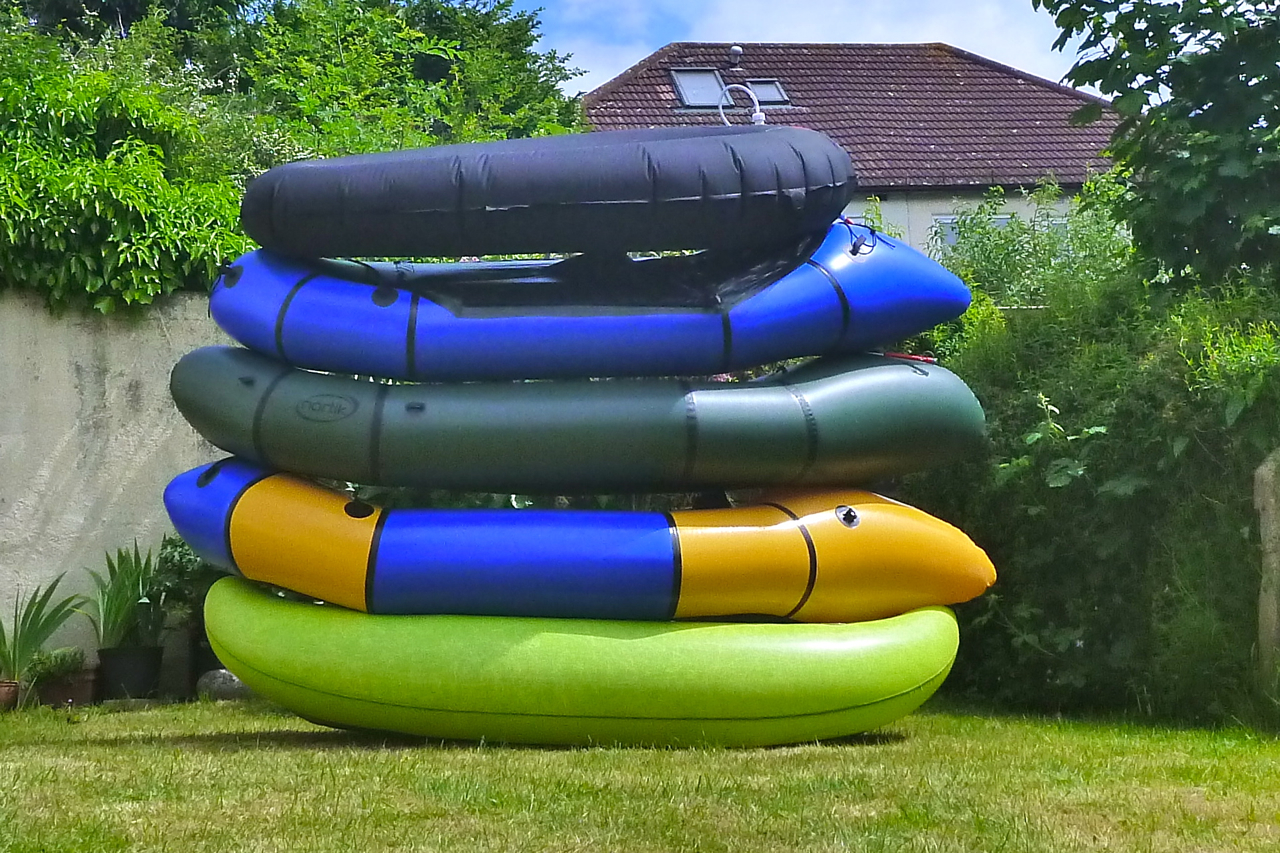



















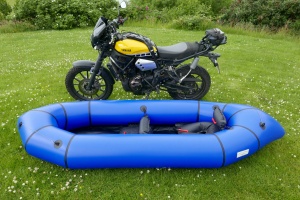
This is a brilliant read and resource for someone like me, looking to buy their first packraft. The Anfibio Nano RTC looks closest to what I’m looking for so far, but maybe slightly above budget given I’m just starting out and not available until later in the year. But even knowing it exists is a great help.
I’m inspired by your trip writeups too. Whether Knoydart, London or beyond, I’m excited that packrafting will open up new worlds to me. I had Scotland in mind but hadn’t thought of London. :-D
LikeLiked by 1 person